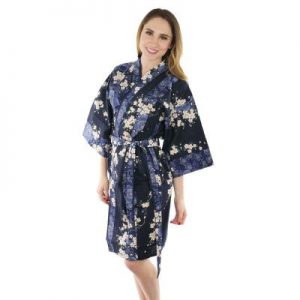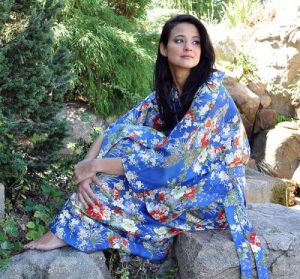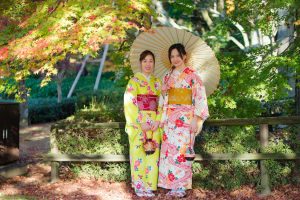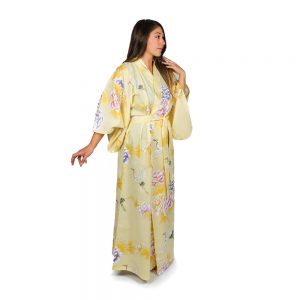This season, one classic yet versatile garment is making waves in the fashion world — the Happi Coat. A shorter-length version of the traditional kimono or yukata, Happi Coats are effortlessly stylish, lightweight, and perfect for a range of occasions. At Chopa.com, we’re proud to offer a curated selection of these timeless beauties, blending cultural heritage with modern appeal. Whether you’re looking for something traditional or trendy, Happi Coats are a must-have addition to your wardrobe this season.
The Timeless Appeal of Happi Coats
Happi Coats hold deep cultural significance in Japanese fashion and history. Originally used by festival workers and traditional artisans, these coats were designed for practicality but soon became a symbol of respect and unity. Their short length, vibrant designs, and unique patterns made them a beloved garment for celebratory occasions and everyday wear alike.
Today, Happi Coats have evolved into a global trend, thanks to their mix of comfort and style. Their blend of heritage artistry and modern tailoring turns every outfit into a conversation starter, seamlessly incorporating an authentic cultural touch into contemporary wardrobes.
Why Happi Coats Are Trending This Season
Here are a few reasons why Happi Coats are dominating style trends right now:
1. Versatile Styling Options
-
- Dress up or down! Happi Coats pair beautifully with jeans and a simple tee for an effortlessly chic, casual look. Alternatively, layer them over a sleek black dress for an elegant statement.
- They’re also perfect for lounging at home, offering both comfort and visual flair.
2. Season-Friendly Fabrics
-
- Happi Coats are typically crafted from lightweight, breathable materials, such as cotton or linen. These fabrics are ideal for transitioning wardrobes through warm summer evenings and the breezy early days of fall.
3. Bold Prints and Designs
-
- This season celebrates vibrant hues and bold prints, and Happi Coats delivers just that. From intricate floral arrangements to geometric patterns, they allow wearers to showcase their individuality while nodding to traditional Japanese aesthetics.
4. Cultural Appreciation Meets Modern Fashion
-
- With growing interest in mindful purchasing and culturally significant pieces, Happi Coats are more than just garments — they’re a way to celebrate diversity through fashion.
Styling Your Happi Coat Perfectly
Not sure how to make the Happi Coat work for you? Here are some styling ideas:
- Casual Chic: Pair a floral Happi Coat with distressed jeans, a basic white t-shirt, and sneakers for a laid-back weekend look.
- Boho Elegance: Layer a lightweight Happi Coat over a neutral maxi dress with strappy sandals and minimalist gold jewelry.
- Work-Appropriate: Choose a subtle patterned Happi Coat to wear over a fitted top and tailored trousers for a modern, polished office outfit.
- Evening Glamour: Opt for a rich, dramatic color like deep navy or crimson, and layer your Happi Coat over a classic little black dress.
The possibilities are endless, which is why they’re quickly becoming a wardrobe essential!
Why Chopa.com’s Happi Coats Stand Out
At Chopa.com, we pride ourselves on offering a carefully curated selection of Happi Coats that celebrate the artistry and heritage behind these beautiful garments. Here’s why shopping for your Happi Coat at Chopa is the best choice:
- Wide Variety: We carry Happi Coats in countless designs, from traditional motifs to contemporary patterns, ensuring there’s something for every personal style.
- Premium Quality: Each Happi Coat is crafted from high-quality fabrics, ensuring you get durability and comfort with every wear.
- Uniqueness You’ll Love: Many of our designs are exclusive to Chopa, meaning you’ll find one-of-a-kind pieces that stand out from the crowd.
- Cultural Integrity: We honor the cultural roots of Happi Coats by sourcing authentic designs inspired by Japanese traditions.
When you shop at Chopa.com, you’re not just purchasing a garment — you’re investing in a piece of history, carefully tailored for today’s style aficionados.
Explore the Trend Today!
There’s no better time to add a Happi Coat to your wardrobe than now. Its versatility, cultural significance, and contemporary appeal make it a standout choice for any season. From casual outings to elegant evenings, these coats epitomize functional fashion.
Discover the perfect Happi Coat for your style by exploring our extensive collection at Chopa.com. Make this season your most stylish yet with timeless pieces that speak volumes. Start shopping today and see why Happi Coats are this season’s hottest trend!










